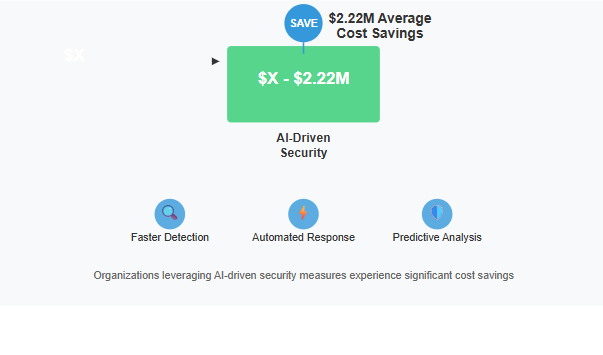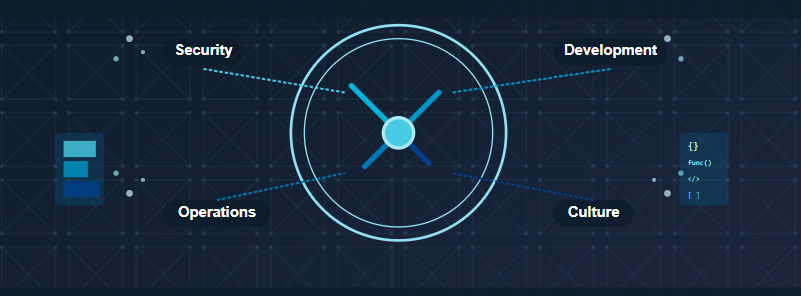In today’s rapidly evolving digital landscape, organizations across Australia are increasingly adopting DevSecOps practices to integrate security into their development processes. DevSecOps — the integration of development, security, and operations — aims to build security into applications from the ground up rather than treating it as an afterthought. However, the successful implementation of DevSecOps requires measurable outcomes to demonstrate value and drive continuous improvement.
According to the Australian Cyber Security Centre (ACSC) Annual Cyberthreat Report 2023-20241, over 87,400 cybercrime reports were made in FY2023-24, with many vulnerabilities traced back to insecure development practices.
This article explores the essential metrics and KPIs that Australian organizations should track to measure the effectiveness of their DevSecOps initiatives, ensuring security is truly integrated into the development lifecycle while maintaining operational efficiency.
The State of DevSecOps in Australia
The ASD Cyberthreat Report 2023-20242 highlights the challenges organizations face in measuring DevSecOps success, emphasizing the need for structured KPIs like Mean Time to Detect (MTTD) and Mean Time to Remediate (MTTR). It underscores the importance of automated security testing and continuous monitoring to enhance security resilience within development pipelines. Additionally, the report stresses compliance with security frameworks and regulatory requirements as key indicators of DevSecOps maturity. This gap highlights the need for better metrics to evaluate DevSecOps success.
IBM’s 2024 Security Report, “Cost of a Data Breach Report 20243,“ shows that organizations leveraging AI and automation in security workflows experience significant cost savings and improved breach prevention
Core Categories of DevSecOps Metrics
Effective measurement of DevSecOps success requires tracking metrics across multiple dimensions. Successful DevSecOps implementation should measure:
- Security posture metrics
- Development velocity metrics
- Operational reliability metrics
- Cultural and collaboration metrics
Let’s explore each category in detail.
Security Posture Metrics
1. Vulnerability Detection and Remediation
Tracking the number of vulnerabilities identified during different stages of development provides insight into the effectiveness of security tools and practices.
Key metrics include:
- Mean Time to Detect (MTTD): The average time between a vulnerability’s introduction and its detection.
- Mean Time to Remediate (MTTR): The average time between vulnerability detection and remediation.
- Vulnerability Escape Rate: The percentage of vulnerabilities that make it to production without being detected earlier.
Microsoft’s Security Development Lifecycle (SDL) documentation4 emphasizes integrating security into development workflows, which can significantly improve response times and reduce vulnerabilities.
2. Security Debt
Similar to technical debt, security debt represents the accumulation of known security issues that have not been addressed. Tracking this metric helps organizations prioritize remediation efforts.
3. Compliance Posture
This metric tracks adherence to regulatory requirements and internal security policies.
- Compliance pass rate: Percentage of compliance checks passed
- Mean time to compliance: Time required to address compliance issues
ASD emphasizes that continuous compliance monitoring significantly improves adherence to the Essential Eight security controls5. The Essential Eight maturity model highlights the importance of ongoing security assessments rather than relying solely on periodic evaluations.
Development Velocity Metrics
1. Deployment Frequency
How often an organization deploys code to production is a key indicator of DevSecOps maturity. Google’s DORA research6 indicates that elite DevSecOps teams deploy more frequently than low-performing teams.
2. Lead Time for Changes
This measures the time it takes for a code change to go from commit to successfully running in production.
3. Security Testing Integration and Automation
- Percentage of automated security tests: Measures the degree to which security testing is automated
- Security testing coverage: Percentage of code covered by security tests
- Security testing pass rate: Percentage of security tests that pass on the first attempt
Operational Reliability Metrics
1. Change Failure Rate
This measures the percentage of deployments that result in degraded service and require remediation. A lower rate indicates more reliable releases with fewer security-related failures.
2. Mean Time to Restore (MTTR)
How quickly service can be restored after an incident. Microsoft’s unified security operations platform, in “Improve security posture management and reduce risk7”, shows the benefits of integrating security and operations teams, improving response times and reducing risk.
3. Security Incident Impact
- Number of security incidents: Total count of security breaches or incidents
- Cost per incident: Average financial impact of security incidents
- User impact minutes: Total downtime experienced by users due to security incidents
IBM’s Cost of a Data Breach Report 20248 reveals that organizations leveraging AI-driven security measures experience significant cost savings, with some reducing breach costs by an average of $2.22 million compared to those without automation.

Cultural and Collaboration Metrics
1. Cross-Functional Collaboration
- Security knowledge distribution: Percentage of developers with security training
- Shared responsibility adoption: Percentage of security issues addressed by development teams without security team intervention
2. Security Champion Effectiveness
- Security champion to developer ratio: Number of security champions relative to development team size
- Security improvements initiated: Number of security improvements proposed by security champions
Implementing a DevSecOps Measurement Framework
Establishing an effective measurement framework requires a strategic approach:
1. Start with Baseline Metrics
Begin by establishing your current performance levels across all metric categories to identify areas for improvement.
2. Set Realistic Targets
Based on your baseline and industry benchmarks, set achievable improvement targets.
3. Implement Automated Dashboards
Create real-time visibility into your metrics. IBM’s research “Observability, insights, and automation9” reiterates the importance of automated metrics dashboards in improving DevSecOps efficiency, observability, and continuous improvement. Their research highlights how automation enhances security visibility, streamlines incident response, and supports proactive risk management
4. Regular Review Cadence
Industry best practices show continuous measurement, monitoring, and reporting as essential for improving security posture and accountability
Thought Experiment: Australian Financial Institution
A major Australian financial institution implemented a comprehensive DevSecOps metrics framework in 2023. Within 12 months, they achieved:
- 78% reduction in MTTR for critical vulnerabilities
- 45% increase in deployment frequency
- 62% reduction in security incidents
- 37% decrease in compliance-related delays

Their approach focused on balanced metrics across all four categories, with particular emphasis on cultural metrics to drive organizational change.
Challenges and Pitfalls
While measuring DevSecOps success is critical, organizations should be aware of common challenges:
1. Metric Overload
Tracking too many metrics can lead to analysis paralysis. The concept of analysis paralysis due to excessive data tracking is widely recognized. Organizations overwhelmed by too many metrics often struggle with decision-making and actionable insights.
2. Vanity Metrics
Some metrics may look impressive but provide little actionable insight.
3. Misaligned Incentives
If metrics are tied to individual performance without considering team outcomes, they may drive counterproductive behaviours. Google’s Guides in “Understand Team Effectiveness10” show the importance of team-level metrics to promote collaboration.
Future Trends in DevSecOps Metrics
Looking ahead, several emerging trends will influence how organizations measure DevSecOps success:
1. AI-Enhanced Security Metrics
Machine learning algorithms are increasingly being used to predict security vulnerabilities and recommend preventive measures.
2. Value Stream Metrics
Moving beyond technical metrics to measure business outcomes of DevSecOps initiatives.
3. Supply Chain Security Metrics
With the increasing reliance on third-party components, metrics to evaluate supply chain security are becoming essential.
Conclusion
Effectively measuring DevSecOps success requires a comprehensive approach that balances security, development velocity, operational reliability, and cultural metrics. Australian organizations that implement robust measurement frameworks gain visibility into their DevSecOps maturity, identify areas for improvement, and demonstrate the value of their security investments.
By focusing on the metrics outlined in this article and adapting them to their specific organizational context, Australian businesses can build more secure software faster while maintaining operational excellence.
Remember that metrics should evolve as your DevSecOps practices mature, with an increasing focus on outcomes rather than activities. Start with baseline measurements, set realistic improvement targets, and use automated dashboards to track progress and drive continuous improvement.
As the cybersecurity landscape continues to evolve, organizations that master the measurement of their DevSecOps initiatives will be better positioned to protect their digital assets while delivering innovative solutions to their customers.
References
- Australian Cyber Security Centre (ACSC), “Annual Cyberthreat Report 2023-2024”, 2024 https://www.cyber.gov.au/about-us/view-all-content/reports-and-statistics/annual-cyber-threat-report-2023-2024 ↩︎
- Australian Signals Directorate (ASD), “Cyberthreat Report 2023-2024”, 2024 https://www.cyber.gov.au/about-us/view-all-content/reports-and-statistics/annual-cyber-threat-report-2023-2024 ↩︎
- IBM, “2024 Security Report”, 2024 https://www.ibm.com/reports/data-breach ↩︎
- Microsoft, “Security Development Lifecycle (SDL) documentation”, https://www.microsoft.com/en-us/securityengineering/sdl/ ↩︎
- Australian Signals Directorate (ASD), “Essential Eight security controls”, 2023 https://www.cyber.gov.au/resources-business-and-government/essential-cybersecurity/essential-eight/essential-eight-maturity-model ↩︎
- Google, “DORA research”, 2021 https://cloud.google.com/blog/products/devops-sre/announcing-dora-2021-accelerate-state-of-devops-report ↩︎
- Microsoft, “Improve security posture management and reduce risk”, 2025 https://learn.microsoft.com/en-us/unified-secops-platform/reduce-risk-overview ↩︎
- IBM, “Cost of a Data Breach Report 2024”, 2024 https://www.ibm.com/reports/data-breach ↩︎
- IBM, “Observability, insights, and automation”, 2024 https://developer.ibm.com/articles/observability-insights-and-automation/ ↩︎
- Google, “Understand Team Effectiveness”, https://rework.withgoogle.com/en/guides/understanding-team-effectiveness
↩︎
At the intersection of development, security, and operations, we recognize the critical need for measurable success in today’s fast-paced DevSecOps world. At Christian Sajere Cybersecurity and IT Infrastructure, our data-driven approach simplifies continuous improvement, ensuring your organization remains secure and high-performing at all times. Let us help you measure what matters.
Related Blog Posts
- Board Reporting on Cybersecurity: What Executives Need to Know
- Multi-Factor Authentication: Comparing Different Methods
- Secrets Management in DevOps Environments: Securing the Modern Software Development Lifecycle
- Zero Trust for Remote Work: Practical Implementation
- DevSecOps for Cloud: Integrating Security into CI/CD
- Customer Identity and Access Management (CIAM): The Competitive Edge for Australian Businesses
- Infrastructure as Code Security Testing: Securing the Foundation of Modern IT


